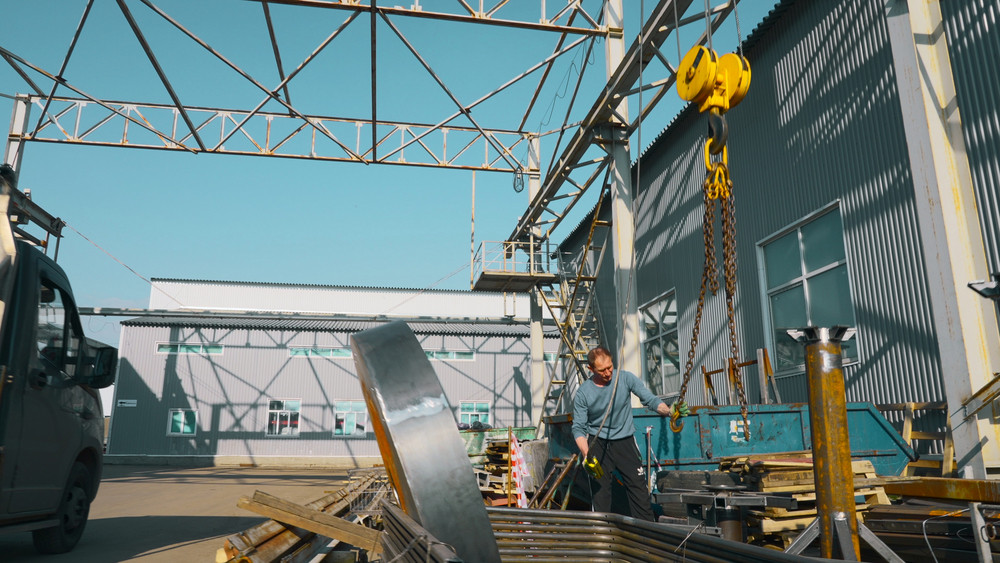
How Is Crane Capacity Determined and Why Does It Matter?
Highlights
- Crane capacity is the maximum load a crane can lift safely under specific configurations and conditions.
- Load charts, boom length, radius, counterweights, and ground stability all influence lifting capacity.
- Exceeding rated capacity increases the risk of tipping, structural failure, or equipment damage.
- Proper lift planning, operator training, and understanding of manufacturer charts are essential for safety.
- Adhering to capacity limits protects workers, prevents costly downtime, and ensures compliance with regulations.

Understanding Crane Capacity
Crane capacity refers to the maximum weight a crane can lift safely at a given radius, boom length, and configuration. Every crane, from a small mobile unit to a massive crawler crane, has specific capacity limits outlined by the manufacturer. These limits are not fixed numbers—they change depending on how the crane is set up and what kind of lift is being performed. Operators rely on detailed load charts to determine the safe working load under each condition. Understanding these values is fundamental to preventing accidents and optimizing performance on job sites where precision and safety are paramount.
Role of Load Charts in Determining Capacity
A crane’s load chart is its most important safety document. It provides precise lifting limits based on variables such as boom length, operating radius, boom angle, and counterweight configuration. For example, extending the boom increases the distance between the crane and the load, reducing its lifting capacity. Similarly, operating on uneven terrain or with improper setup can further decrease safe limits. Certified operators are trained to read and interpret these charts before any lift begins. According to the Occupational Safety and Health Administration (OSHA), under its Crane and Derricks in Construction standard (29 CFR 1926.1417), the crane operator must have “rated capacities (load charts)” and all manufacturer procedures readily available in the cab, and must not continue if those capacities are inaccessible.
Factors That Affect Lifting Capacity
Several elements determine how much weight a crane can handle safely. The boom length and angle play major roles—the longer and more horizontal the boom, the less weight it can lift. The radius, or the horizontal distance from the crane’s center of rotation to the load, also affects capacity. Counterweights stabilize the machine and prevent tipping, while outrigger placement distributes load forces evenly. Additionally, the type of crane—whether it’s a tower crane, rough-terrain crane, or hydraulic truck crane—dictates structural strength and stability. Operators must consider all these variables before performing a lift, especially in complex environments with uneven ground or multiple obstacles.
Importance of Ground Conditions and Setup
Ground stability is often underestimated when calculating crane capacity. Even if a crane is rated for a certain load, poor soil conditions can compromise safety. Contractors typically use load-bearing assessments or mats to distribute weight across the ground. A soft or unstable surface can lead to outrigger failure, causing the crane to tip over. That’s why lift planning includes geotechnical evaluations and setup inspections. Many companies use digital terrain mapping or ground pressure sensors to confirm stability before lifting. These precautions are vital to keeping operations within safe working limits and protecting workers on-site.

Impact of Boom Extensions and Accessories
Modern cranes often use jibs or boom extensions to reach higher or more complex lift points. However, these attachments can significantly alter load capacity. A longer reach increases leverage on the boom, reducing the allowable weight that can be lifted safely. Manufacturers provide detailed adjustments for these extensions in the load chart. Failure to account for them can cause overloads even when the main boom appears to be within safe limits. Additionally, rigging equipment—such as slings, hooks, and spreader bars—must also be factored into the total load weight, as their combined mass contributes to the total lifting calculation.
Why Capacity Ratings Are Crucial for Safety
The consequences of exceeding a crane’s rated capacity can be catastrophic. Overloading can cause structural failure, loss of control, and severe injury to personnel. According to the U.S. Bureau of Labor Statistics, more than 20% of crane accidents involve overloading or improper setup. These incidents often result in costly downtime, property damage, and legal liabilities. Adhering to capacity limits ensures that each component operates within its engineered tolerance. Routine inspections, proper training, and supervision help maintain compliance and prevent avoidable accidents on-site. Understanding why those limits exist is just as important as knowing what they are.
How Technology Improves Capacity Monitoring
Crane manufacturers have integrated advanced technology to assist operators in maintaining safe capacity levels. Load Moment Indicators (LMIs) and Rated Capacity Indicators (RCIs) are standard features in modern cranes. These systems calculate real-time lifting parameters and issue warnings when nearing maximum thresholds. Some models even disable certain functions if unsafe conditions are detected. Remote monitoring and digital sensors now allow supervisors to track multiple cranes simultaneously, ensuring every lift stays within operational limits.
Training and Certification Standards
Certified training is a key part of understanding and applying crane capacity rules. Operators must pass practical and theoretical exams covering load charts, setup procedures, and safety practices. The National Commission for the Certification of Crane Operators (NCCCO) sets national standards that ensure competency. Proper education helps operators understand how small changes—like a shift in wind direction or boom angle—can alter lifting performance. Ongoing education also reinforces awareness of technological updates, mechanical systems, and evolving safety protocols. Well-trained operators are less likely to make costly mistakes, contributing to a safer and more efficient job site.
Crane capacity is more than a technical specification—it’s the foundation of safe and efficient lifting operations. Every load chart entry, setup adjustment, and sensor alert represents years of engineering and testing designed to protect both people and equipment. By respecting those parameters, project managers and operators uphold safety standards that benefit the entire construction industry. Whether lifting a small HVAC unit or a massive steel beam, understanding crane capacity ensures that every lift is planned, controlled, and executed with confidence.


